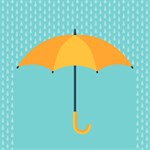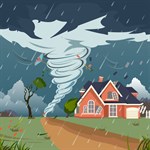- Personal Banking
- Business Banking
- Investments
- Loans
- Join Us
- Find Us
- About Us
- Contact Us
- Resources
- Rates
- Routing # 265473511
- Open An Account
From budgeting and saving to credit scores and debt, take control of your finances and learn how to manage your money wisely. Also, games for kids to learn about money management. A great resource for financial literacy can be found at...

• Deed to your home
• Passports
• Social Security Cards
• Birth Certificates
• Insurance Documents
 As much as we prepare for life’s events, the unexpected can happen. Your pet might need a costly treatment. Your car could break down and require expensive repairs. You could damage your smartphone and have to replace it. Any one of these unplanned expenses could impact your budget by hundreds or thousands of dollars. A recent study found that 63 percent of Americans lack the savings to pay for a $500 to $1,000 emergency. This means almost two-thirds of Americans would need to cut spending or incur debt to cover emergencies – decisions that could create even more financial stress. Would you have the money to cover these financial curveballs? That’s where an emergency fund comes in.
As much as we prepare for life’s events, the unexpected can happen. Your pet might need a costly treatment. Your car could break down and require expensive repairs. You could damage your smartphone and have to replace it. Any one of these unplanned expenses could impact your budget by hundreds or thousands of dollars. A recent study found that 63 percent of Americans lack the savings to pay for a $500 to $1,000 emergency. This means almost two-thirds of Americans would need to cut spending or incur debt to cover emergencies – decisions that could create even more financial stress. Would you have the money to cover these financial curveballs? That’s where an emergency fund comes in.
There’s no need to dwell on the what-ifs, but saving for them is important; if you don’t have an emergency fund, the consequences could be financially devastating.
What Is an Emergency Fund?
An emergency fund is money that you have saved to help you cover unexpected costs that come with everyday life. This could be a medical emergency or home repair. Many of these costs cannot be predicted, but nearly everyone will face these kinds of expenses throughout their lives. That’s why having an emergency fund is always worthwhile, because you won’t be caught off guard without the means to resolve the financial situation. Experts say it’s smart to build and maintain an emergency fund with three to six months’ worth of living expenses.
How Do You Start an Emergency Fund?
Start by setting a monthly savings goal and set up the funds for automatic transfer to a savings account. That way, you will be saving money without even thinking about it. You will want to take a close look at your finances to ensure that you are not saving so much money that you can’t pay for other everyday costs, or so little that your savings won’t cover a potential emergency.
Where Should You Keep an Emergency Fund?
Savings accounts are the safest place to keep your emergency fund so that you won’t be tempted to dip into it. Emergency funds should be kept fairly liquid so you’ll be able to access them quickly if an unexpected expense comes up. If you need to use your emergency savings, you’ll be glad they’re available.
How Much Should You Save?
The size of an emergency fund will probably change as your financial situation does, so it’s important to revisit your budget and make sure you’re covered. For some, this might mean a couple of large transfers into an account. For others, building an emergency fund could be a longer process and might require smaller deposits each month. The key to building an emergency fund is to set money aside every month, no matter how small the amount.
 During hurricane season, coastal residents often bolster storm doors and windows, and stock up on flashlights, batteries and water. But homeowners should also prepare for the impact a storm could have on their wallets. Here’s a primer on insurance deductibles for windstorm damage and why home-equity financing could help you meet yours.
During hurricane season, coastal residents often bolster storm doors and windows, and stock up on flashlights, batteries and water. But homeowners should also prepare for the impact a storm could have on their wallets. Here’s a primer on insurance deductibles for windstorm damage and why home-equity financing could help you meet yours.
Obtaining a home equity line of credit, or HELOC, is one way to prepare for a hurricane deductible. Available at lenders such as EFCU Financial, a HELOC lets you use the equity built up in your residence — that is, the difference between the property’s current market value and the balance you owe on your mortgage.
A HELOC is similar to a revolving charge account, such as a credit card. You can borrow up to the amount of your loan over a set period of time, and you pay interest only on what you borrow.
From 1994 to 2013, tropical storms and hurricanes caused $159.1 billion in insured losses in the U.S. In response to major losses, such as those caused by Hurricane Andrew and Hurricane Katrina, many insurers have introduced hurricane and tropical storm deductibles. A deductible is what a policyholder must pay for a loss before the insurer steps in. Peril-specific deductibles make policyholders in some coastal states shoulder more risk and hold down premiums for other homeowners.
In states such as Louisiana, a storm that’s given a name by the National Hurricane Center can trigger a deductible that reflects a percentage of your home’s value — often as much as 5% — rather than the flat figure deductible associated with fire or theft. That percentage may not seem like much, but it would cost you $10,000 for the total loss of a $200,000 home. Most people can’t afford to foot such a big bill without warning.